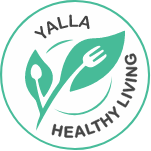If you’re wondering how to start a sustainable lifestyle, the best way is by making the simplest and smallest changes. Before we get into them, let me remind you of the importance of a sustainable lifestyle.
The main reason sustainable living is important is because it helps to keep the environment comfortable for us to live in, and it allows all of us to have enough resources we need. Beyond that, it benefits our finances and our overall happiness.
Here are 17 tips on how to start a sustainable lifestyle in 2022:
HOW TO BE MORE SUSTAINABLE AT HOME
1. DRY YOUR LAUNDRY ON A LINE

Dryers use more energy than almost any other product in your home. Drying your clothes outside can lower a large amount of energy you use. It’s very simple. Anytime you use power, power plants release carbon and other gases into the atmosphere.
2. UNPLUG YOUR DEVICES
Even when you have your TV turned off, it still uses power because it’s plugged in. Boston University found that on average, a household in the U.S. has 40 products that are always plugged in. That adds up to about 10% of the energy used in your home.
Additionally, if finances are important to you, the energy from those products can add up to an extra $100 on your energy bill. Unplugging your devices only takes a few minutes of your time, saves you money, and can help save the environment.
3. COOK AT HOME MORE

Restaurants tend to serve our food in portions that are more than we can finish. The high servings are what cause a lot of food waste.
The New York Times found that globally, we waste about 1.3 billion tons of food. That adds up to about one-third of the food that we grow.
We have more control of our portions when we cook at home, such as through meal prepping. Nonetheless, if you want to eat out, save what you don’t finish for another meal at home.
4. USE YOUR HEATING AND AIR CONDITIONING LESS
Your heating and air conditioning can be responsible for up to half the energy used in your home. There are a few things you can do to avoid using it as often.
Avoid using microwaves, stoves, and ovens during the hottest times of the day, as this will increase the heat in your home. In the winter, if you mainly use one room in your home, consider getting a space heater to keep you warm.
Additionally, open the blinds and curtains to let in sunlight to make your house warmer.
HOW TO MAKE MORE SUSTAINABLE SHOPPING CHOICES
5. BUY SEASONAL FOOD

Fruits and vegetables are not all grown in the same season. Apples, for example, are grown in the fall, while spinach, is grown in the spring.
The reason we have these foods available year-round is that they are grown and shipped from remote locations.
Think about everywhere these foods are delivered to in a large country like the United States. That adds up to a lot of fuel used and a lot of carbon released in the atmosphere. When we buy out of season, we’re encouraging these shipments to continue.
Choosing to buy locally and in season helps reduce the amount of shipping done to supply foods that are out of season. Doing this also helps to support your local farmers.
6. USE A REUSABLE BAG
Plastic bags can cause a lot of harm to the environment. They contaminate our soil, our waterway, and unfortunately cause harm to animals that mistake them for food. Additionally, it takes a large amount of energy to manufacture the bag.
Using a reusable bag can reduce the number of plastic bags that end up in our environment, keeping our soil and water cleaner, and our animals living longer.
7. SHOP FOR ORGANIC ITEMS
Purchasing food made through organic farming helps to conserve water, use less energy, lower pollution, and reduce soil erosion.
In addition to organic foods, you can also choose to shop for clothes made with organic materials. Cotton that isn’t made organically uses pesticides that end up in our environment and kill insects like honeybees.
Without honeybees, we’d lose 1/3 of all the food we eat. You can know if a clothing item or fabric related products are organic by looking at the tag on the back.
8. BUY IN BULK

Packaging requires manufacturing that releases carbon in the atmosphere. Then, once it’s used, it ends up being wasted in landfills which pollutes our air, water, and soil.
By choosing to buy items in bulk, you’re reducing the amount of excessive packaging and decreasing the damage to our environment. It will even save you more money.
SUSTAINABILITY IN THE COMMUNITY
9. MORE PUBLIC SPACES
Creating more public parks and gardens helps to encourage citizens to enjoy more physical activities such as walking and cycling. As a result, that reduces the use of cars and lowers the amount of carbon released in the atmosphere.
10. PUBLIC TRANSPORTATION
The availability of public transportation can also reduce the number of cars on the road in a community. Cities can invest in buses, subways, and other forms of transportation that can lead to lower amounts of carbon in the atmosphere.
11. EDUCATING THE PUBLIC
While some people may be aware of the importance of sustainability, many citizens don’t know much about it. The more that a community can educate their citizens on sustainable living, the more people will do their part in helping to take care of the environment.
SUSTAINABILITY AT SCHOOL
12. ASK THE LUNCHROOM TO USE LESS PLASTICS
Growing up, you probably had plastic trays that were used to serve lunch at your school with plastic utensils. Plastic production and waste can have a damaging effect on the planet.
Instead of using disposable trays and utensils, ask your child’s public school to invest in resuable plates and utensils.https://imasdk.googleapis.com/js/core/bridge3.503.0_en.html#goog_898770555
13. USE LESS PAPER
Schools can work to make more documents electronic and have test and assignments done on computers rather than paper. Forests have to be cut down to have paper.
Trees and plants help to absorb carbon, so it doesn’t remain in the atmosphere and cause global warming.
OTHER HELPFUL SUSTAINABILITY TIPS
14. USE LESS WATER
Whether you’re at home or at a friend’s place, try to use as little water as possible. Take shorter showers and keep the water off when brushing your teeth.
15. GROW FOOD
Growing your own food can help you limit the amount of times you drive to the grocery store and also encourage your family to eat less meat. Additionally, the plants will help to absorb more carbon as well.
16. USE LESS LIGHT
Remember to always turn off the lights in a room when you’re not using them. The same applies to electronics as well.
Use the natural light throughout the day as long as you can until you need to turn on the lights. This will reduce your energy use.
17. RECYCLE
This is a tip you’ve probably heard most of your life. But you might have always wondered, “how does recycling help the environment?”
The way recycling helps is it reduces the need for extracting raw materials. These extractions cause air and water pollution, and climate change.
Any of these tips would be a great way for you and your community to start living more sustainably. Try one of them out and continue to do more each day to help save the environment.










